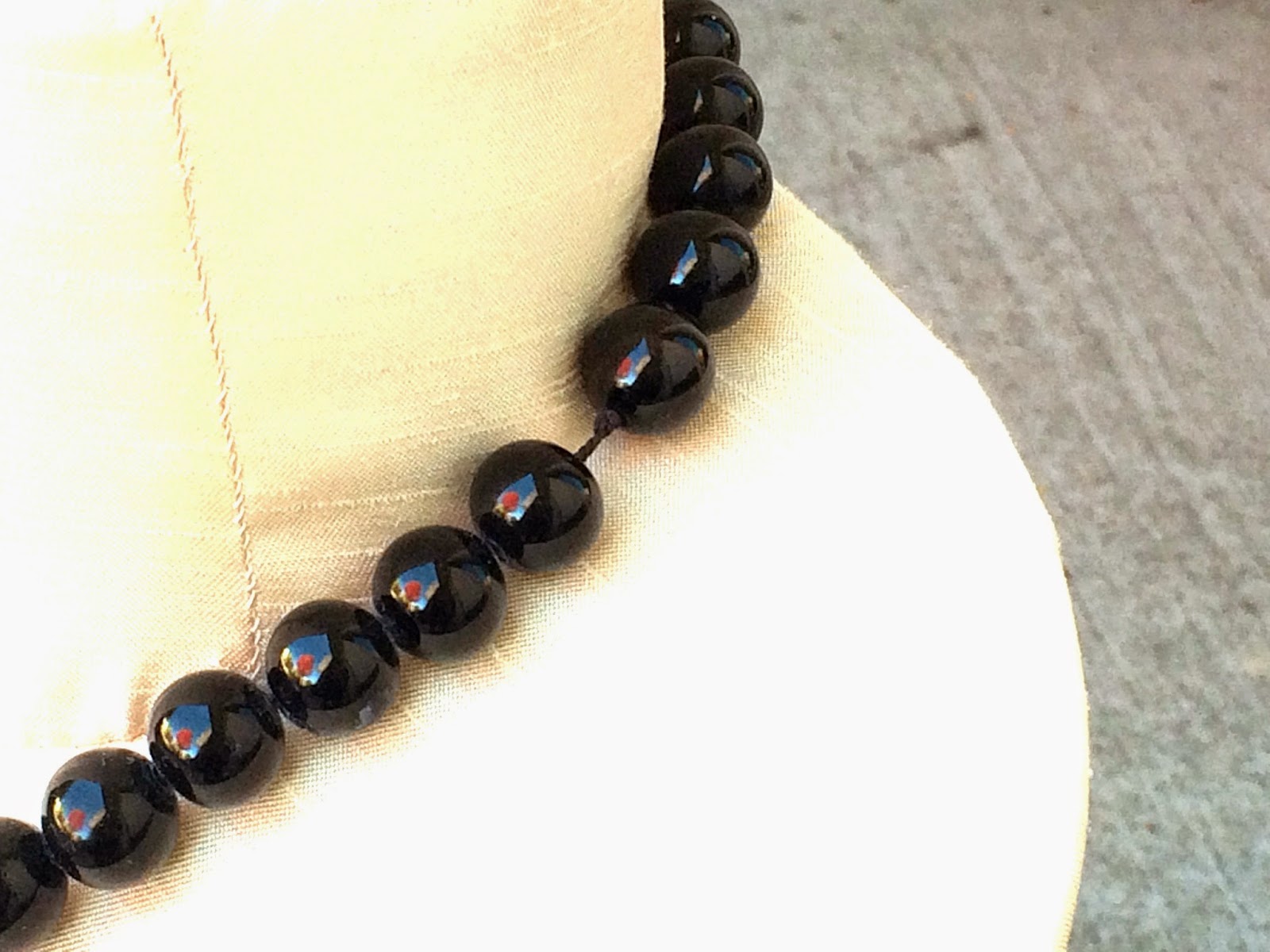One of the first necklaces I ever made for myself, this started out as a vintage 12.5" chocker that was too small for even my scrawny neck. To make it functional, I supplemented the onyx with black glass (an unscrupulous vendor told me it was black onyx and I didn't know the difference) and large contemporary onyx. I hand strung and knotted the beads on double-stranded black silk. I loved the graphic interest introduced by the natural onyx's white quartzile streaks. Being black, this was a great everyday piece for work. I wore it a lot--or at least I did until it stretched out.
Textile-strung necklaces do stretch out and periodically need restringing. The heavier the beads, the more frequently the necklace will need restringing. However, on the production side of jewelry-making, you can reduce the frequency your clients' beads need restringing by:
- Using silk. It has the greatest tensile properties of all the available textiles. FFF-sized silk, for example, has a 15 pound test strength.
- Giving your silk thread a really good, thorough, strong tug before using it. This gets rid of its stretch before you start adding beads.
- Using the right size thread. The silk should fully fill the bead hole. What if the bead hole is huge and even FFF-sized thread won't fill it? String on chain or add more thread! When given the choice I typically prefer to string on silk to keep my beads from knocking together. Thus, when even double-stranded FFF silk won't do the job, I simply start adding more strands of silk until the hole is filled. Usually I don't need to add more than 1-2 strands, but I am perfectly open to adding more if needed.
- Make sure your knots are very, very tight.
On the user's end, the need for restringing can be reduced by:
- Always storing textile-strung necklaces flat, in a box. Do not hang the necklace from a hook, as I did with this piece. The heavier the beads, the more important it is to follow this advice.
- Never hang heavy objects from the necklace. Small children count as heavy objects.
- Keeping the thread dry. If thread does become wet, lay the necklace flat to dry. Wait until the silk is completely dry (usually a full day or two) before wearing the necklace again.






